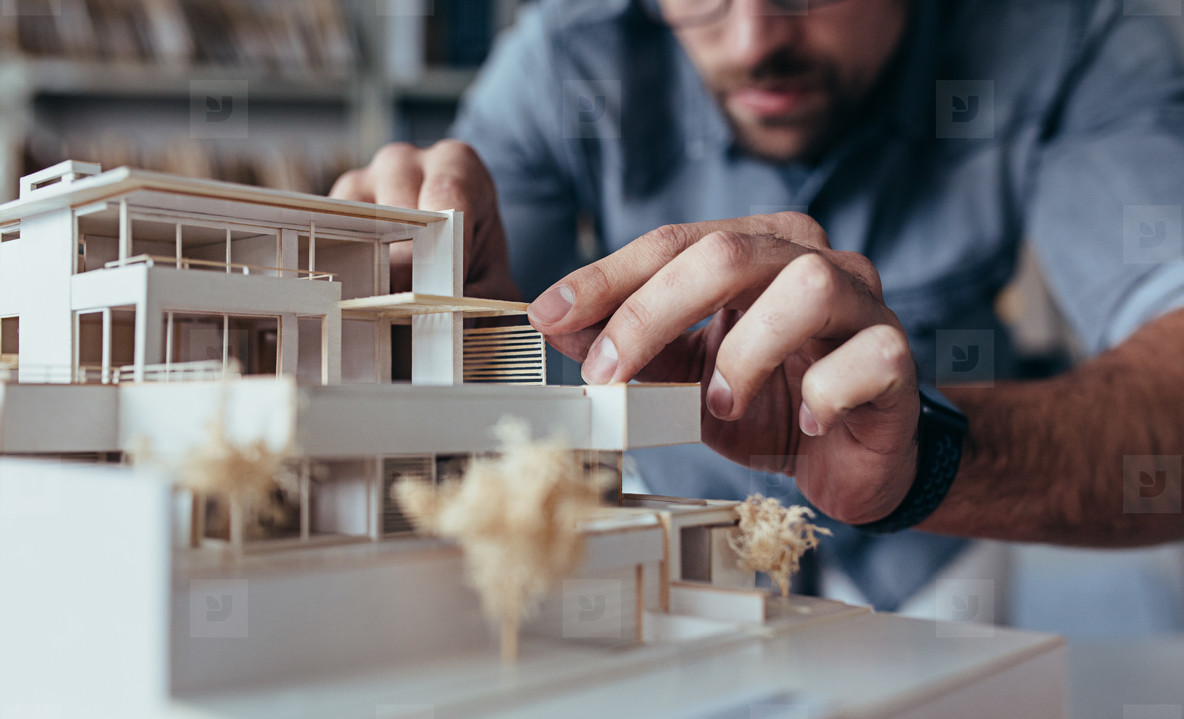Building Your Own Home: Step by Step Guide

Homes come in all varieties to fit all needs. Due to the rich choice of existing housing stock, plus the high cost of building a new-construction home, most would-be homeowners buy an existing house. And this is not a bad choice at all. Most houses are durable enough to last for decades, can readily be remodeled, and they have the potential for increasing in value. A new house can be designed exactly for your needs. It comes with few, if any, hidden problems. Hazardous materials such as lead-based paint and asbestos are non-existent. New advantages are built into the house, and old problems are left out. So, it's no surprise that most people would choose to build their own home rather than buy an old home if all other factors were the same.
This article discusses the following info :
- Should You Act as Your Own Contractor?
- Prepare the Home Site
- Install Plumbing and Electrical
- Frame, Side, and Roof the House
- Hang Drywall and Install Trim
- Paint the Walls and Perform Finish Work
- Install the Flooring
- Final Home-Building Matters
Many states do allow homeowners to act as a contractor for their own home. With this arrangement, you become what is frequently termed an owner-builder. In order to contract out for a large-scale project such as a house (rather than an outbuilding or small, lower-cost building), you need to apply for an owner-builder exemption and to sign the building permit application yourself.
Yet very few people are qualified to act as their own general contractor (GC). Building a house requires you to pull together many strings and make sure that they coordinate in myriad ways. Projects and subcontractors have to be scheduled in the correct order, interspersed with numerous municipal inspections. You'll need to know the building code. Plus, it helps immensely to have a network of subcontractors who you rely on to perform trustworthy work.
The person that does all of that is a general contractor. No general contractor overseeing home construction comes cheap. Most general contractors charge between 10-percent to 20-percent of the overall cost of the home build, and this includes permits and materials. It's a fee that most amateur home-builders find well worthwhile, especially if they have any tried-and-failed experience at general contracting.
First, it's time to get situated—literally and figuratively. Not only are you getting your project straight in your mind and on paper, but you are siting your intended home on its intended spot.
- Clear the building site of brush and other debris, down to ground level and at least 25 feet around the planned house perimeter.
- A surveyor stakes out the lot, based on original plot drawings that indicate the property boundaries.
- Make alterations to the site's topography if necessary to alter the water flow across the site: This often requires a contractor with earth-moving equipment.
- Order a roll-off dumpster to handle refuse during the building project.
- Order one or more portable toilets for the workers.
- Order temporary utilities from the power company..
- Hire an electrician to hook up a temporary electrical panel, which is usually mounted on an existing utility pole.
If you are laying a slab-type foundation, you will bring in plumbers and electricians to rough-in some of the services prior to pouring that concrete slab:
- Pipes are laid by plumbers, and these pipes are later covered up.
- If electrical lines will run through the concrete slab via metal conduits, now is the time for these conduits to be run.

With the excavation, foundation, and concrete work done, soon you will start to recognize your project as a house. The framing carpenters will arrive to put up the lumber framework for the floors, walls, and ceilings, and then move to the sheathing, siding, and roofing installation. This work can happen with remarkable swiftness. In the space of a week or two, you may suddenly recognize this structure as being a house, complete with walls and a roof.
- Work up a framing order of needed lumber, nails, builder's felt or house wrap, and adhesives, based on your building plans.
- When good weather arrives, the carpenter crew arrives to frame the house walls, including the floor, ceiling, and roof skeleton: Framing is the basic shell of the house, minus siding and roof surface. The rough openings for windows, doors, and skylights will be framed at this time. The basic sheathing of the wall and roof surfaces concludes this stage.
- Install the windows, doors, and skylights: Usually, this will be done by the same carpentry crew that did the framing, though sometimes a manufacturer's crew will come in to do this work. It is also a job some homeowners can tackle. At this point, when the building is sheathed, and doors and windows are installed, the subcontractors doing the electrical and plumbing work may now arrive to begin the rough-in portion of their job.
- The finished siding surface is now installed over the sheathing after the house sheathing is first wrapped with some form of weather guard membrane: Again, this work is often done by the same contractor who did the framing and sheathing.
- Finally, the roofers come in to complete the application of roof flashings and the shingles or other finished roof surfaces: The basic shell of the house is now completed.
The interior will begin to look finished as wall and ceiling surfaces are installed.
After the messy work of installing the drywall and priming the walls is done, it is time to bring in the painter.
- Walls are painted and ceilings are either painted or finished with texture. These are jobs that homeowners can tackle themselves to save money. But for homeowners accustomed only to painting a room or two, keep in mind that painting an entire house is an enormous task.
- The kitchen and bathroom countertops are installed. This job is done by countertop specialists who both fabricate and install the countertops.
- The kitchen and bathroom cabinets are installed. Specialty companies supply and install kitchen and bath cabinets.
- The kitchen and bathroom cabinets are installed. Specialty companies supply and install kitchen and bath cabinets.
Lay down the finish flooring (or floor covering) surfaces throughout the house. Floor covering options include carpeting, hardwood, laminate flooring, ceramic tile, luxury vinyl plank, and engineered wood flooring. This is usually a job for yet another subcontractor, though homeowners can tackle the installation of some sections of the flooring.
Clean up the worksite by putting all acceptable debris into the dumpster. The contractor will hire a company that specializes in cleaning up after construction work.
- Complete exterior landscaping. To save money, this can be a do-it-yourself project. Or you can hire your own landscaping company to design and install a stylish landscape for you.
- Remove the dumpster: Call the disposal company to pick up the dumpster and specify that you do not need a replacement.
- Arrange for final inspections by the permitting agencies.
- Schedule a final walk-through if you are using a general contractor.
- Arrange a final inspection by your lender, if you financed the building of your house with a construction loan.
Latest Articles







